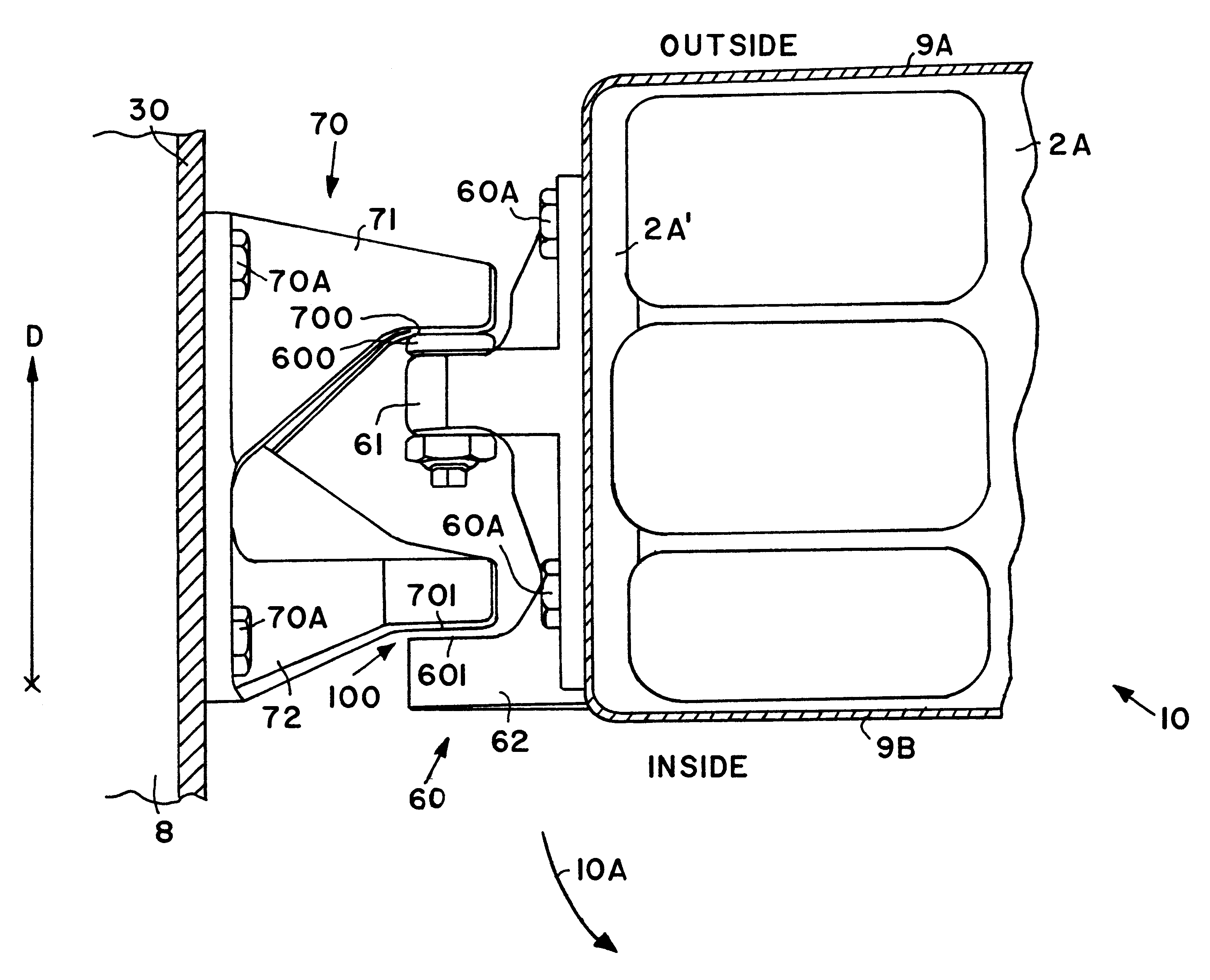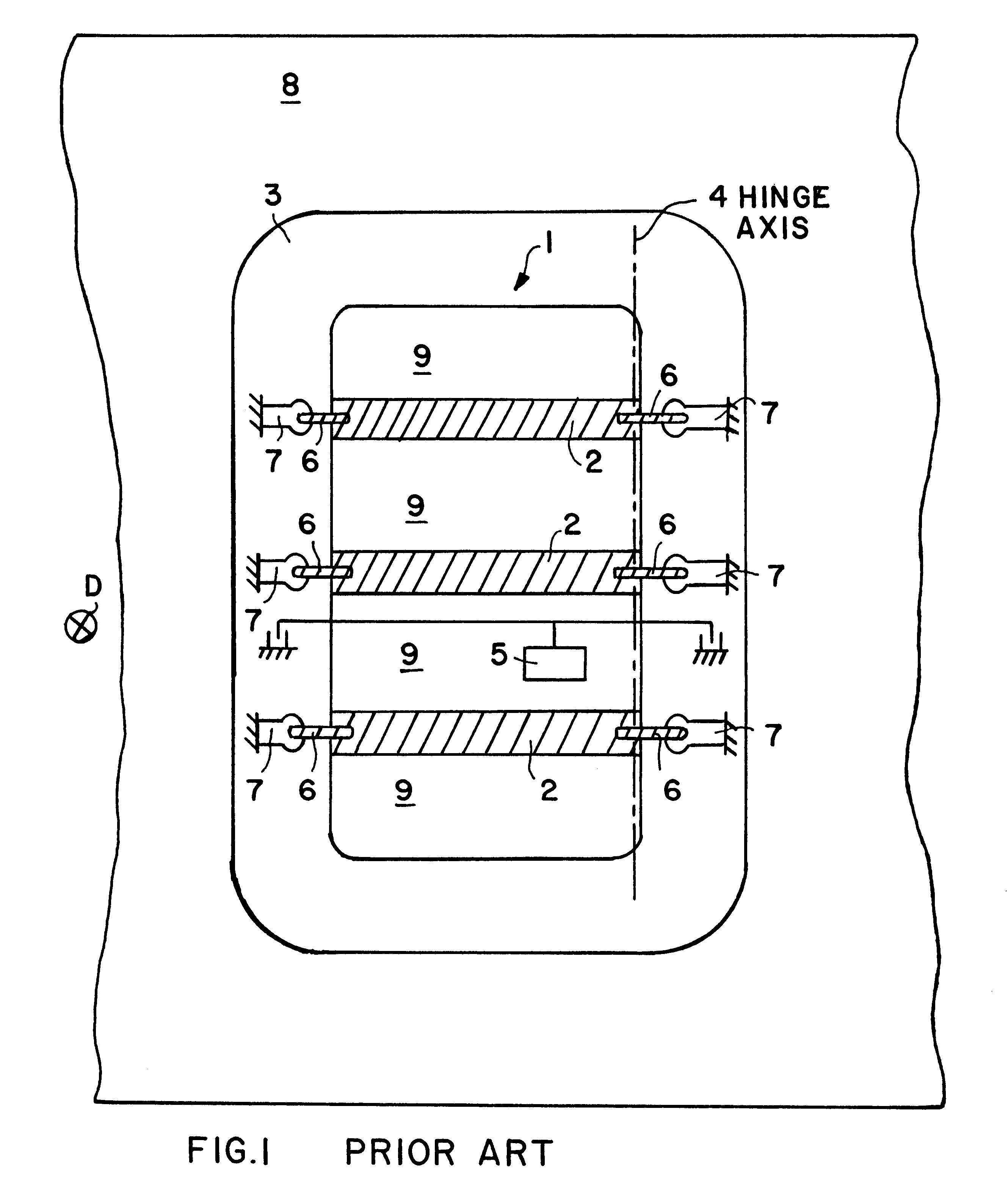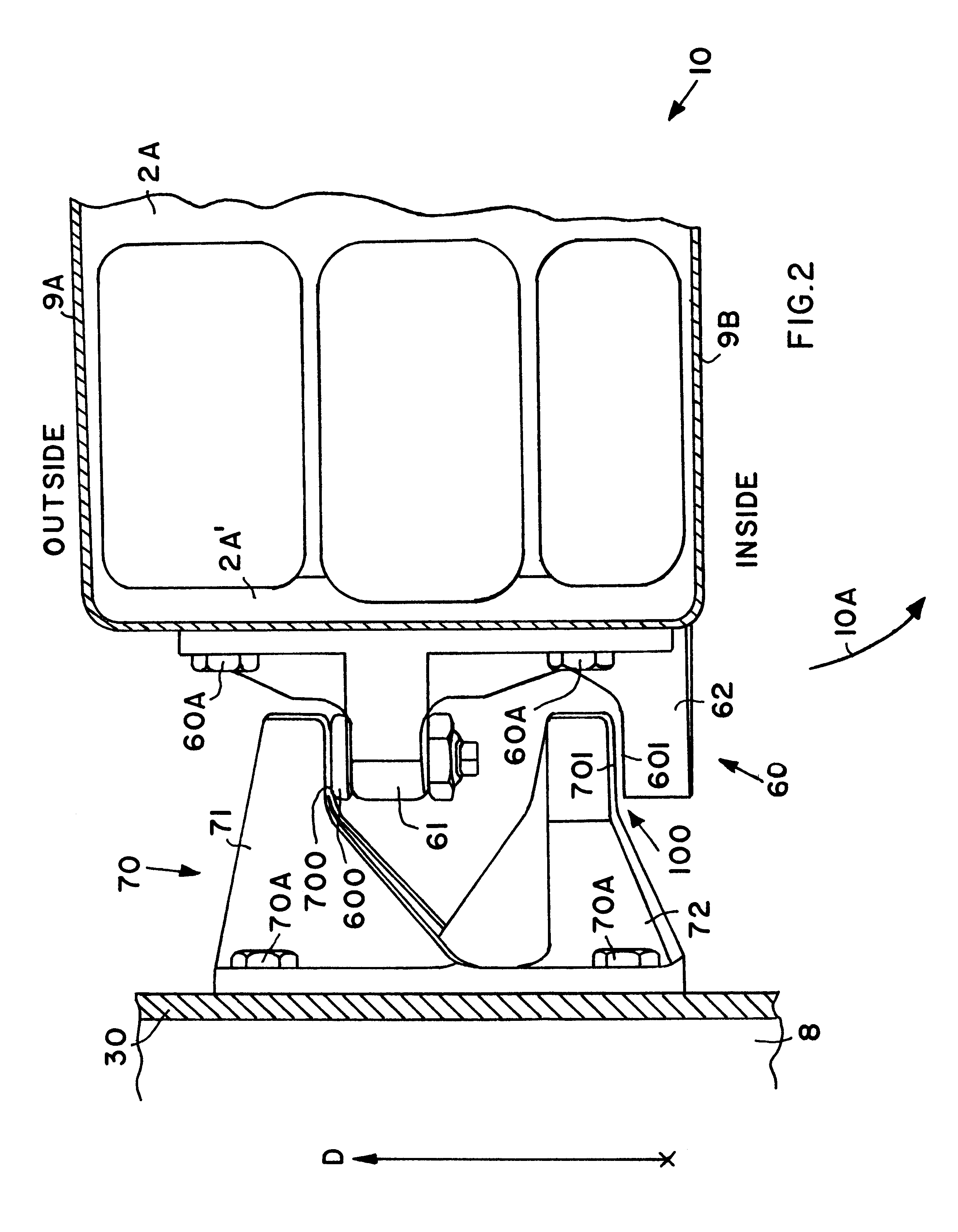Aircraft door structure
a technology for aircraft and doors, applied in the direction of aircraft floors, fuselages, transportation and packaging, etc., can solve the problems of reducing the pressure sealing characteristics of doors, requiring complicated latching and unlatching mechanisms, etc., to improve the safety of stops, reduce production costs, and reduce the weight of door structures
- Summary
- Abstract
- Description
- Claims
- Application Information
AI Technical Summary
Benefits of technology
Problems solved by technology
Method used
Image
Examples
Embodiment Construction
FIG. 1 shows a conventional aircraft door 1 installed in a door opening surrounded by a frame 3 in an aircraft body wall 8. The door 1 comprises a plurality of load bearing beams 2 positioned in several different, usually horizontal, planes and spaced apart from each other. The beams may be arranged in any plane including horizontal planes. The invention does not depend on the orientation of the beams 2. As shown the door 1 is closed and seen from the interior of the fuselage. Such a door can be used in fixed-wing aircraft, rotary-wing aircraft or in transport capsules of a balloon and in any pressurized container.
The length of the shown load bearing beams 2 is the same as the width of the door 1. The beams 2 are connected to the skin or cladding 9 of the door. Each individual beam 2 comprises at each beam end a single stop member 6 with a bearing surface facing outwardly in the load direction D shown as a cross in a circle. When the door 1 is in its shown closed position, the beari...
PUM
 Login to View More
Login to View More Abstract
Description
Claims
Application Information
 Login to View More
Login to View More - R&D
- Intellectual Property
- Life Sciences
- Materials
- Tech Scout
- Unparalleled Data Quality
- Higher Quality Content
- 60% Fewer Hallucinations
Browse by: Latest US Patents, China's latest patents, Technical Efficacy Thesaurus, Application Domain, Technology Topic, Popular Technical Reports.
© 2025 PatSnap. All rights reserved.Legal|Privacy policy|Modern Slavery Act Transparency Statement|Sitemap|About US| Contact US: help@patsnap.com



